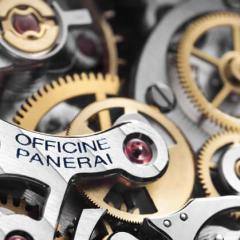Tightening a pocket watch "split" cannon pinion
-
Recently Browsing
- No registered users viewing this page.
-
Topics
-
Posts
-
Well I spoke too soon. Here's where I am now with this issue. I replaced the date jumper and all seemed to function correctly. Fully wound and only in the movement holder, no dial or hands, I let it sit untouched for two days. Both nights it advanced the date. The second night it might have been just shy of fully advanced. Seemed as though I fixed it, so I reassembled the watch. Three nights in a row the date did not advance. Once I pull the crown it does. So you might think that it's the dial interfering, but here's the weird thing. If I advance the date during the day to 11:57p and watch it get to 12:00:30a the date flips with gusto. So here's what I'm thinking and could use your council. I installed a new Swiss mainspring. I used Moebius 8217 braking grease on the barrel walls. It seems to wind quite a bit before slipping, but does slip. I've read that the 7750 really needs Kluber p125 as a braking grease. Do you think it just doesn't have enough power after a few to several hours of sitting before the date change? Here are the TG numbers after service: Rate +1s/d, Amp 301, BE 0.0ms
-
By RichardHarris123 · Posted
I've managed with the ones I have but 1.8 mm would be better. -
Parts weren’t readily interchangeable when this watch was made, and almost every part was adjusted by hand to fit the rest of the parts in that specific watch. That said, it can save time to harvest a part from a donor movement so you can modify it to fit a similar movement, rather than try to make the part from scratch. With that in mind, it is possible that the click from this watch was removed for use in another watch. I doubt that the other missing parts were taken for use as donor parts. The cannon pinion would be removed properly, rather than snapping it off with the centre wheel arbour and pin inside it. The Maltese cross stop works were probably removed by a lazy or less knowledgeable watchmaker servicing the watch. It is very common to encounter otherwise functional watches (including very high end pieces) that are missing their stop work because a previous watchmaker didn’t know how to set it up when reassembling the movement, or was too lazy to bother and knew that the customer would probably never notice. It is possible that the stop work parts were taken to be fitted to a watch that was missing them. Best Regards, Mark
-
I posted a link to another video where he takes it a step further and uses the pins to set and adjust rate as well as positional error. Alex doesn’t manipulate the stud angle after he pushes it in but I find it makes a difference in the spring concentricity and bend. Amex also doesn’t use the pin manipulation to adjust positional discrepancies.
-






Recommended Posts
Join the conversation
You can post now and register later. If you have an account, sign in now to post with your account.
Note: Your post will require moderator approval before it will be visible.